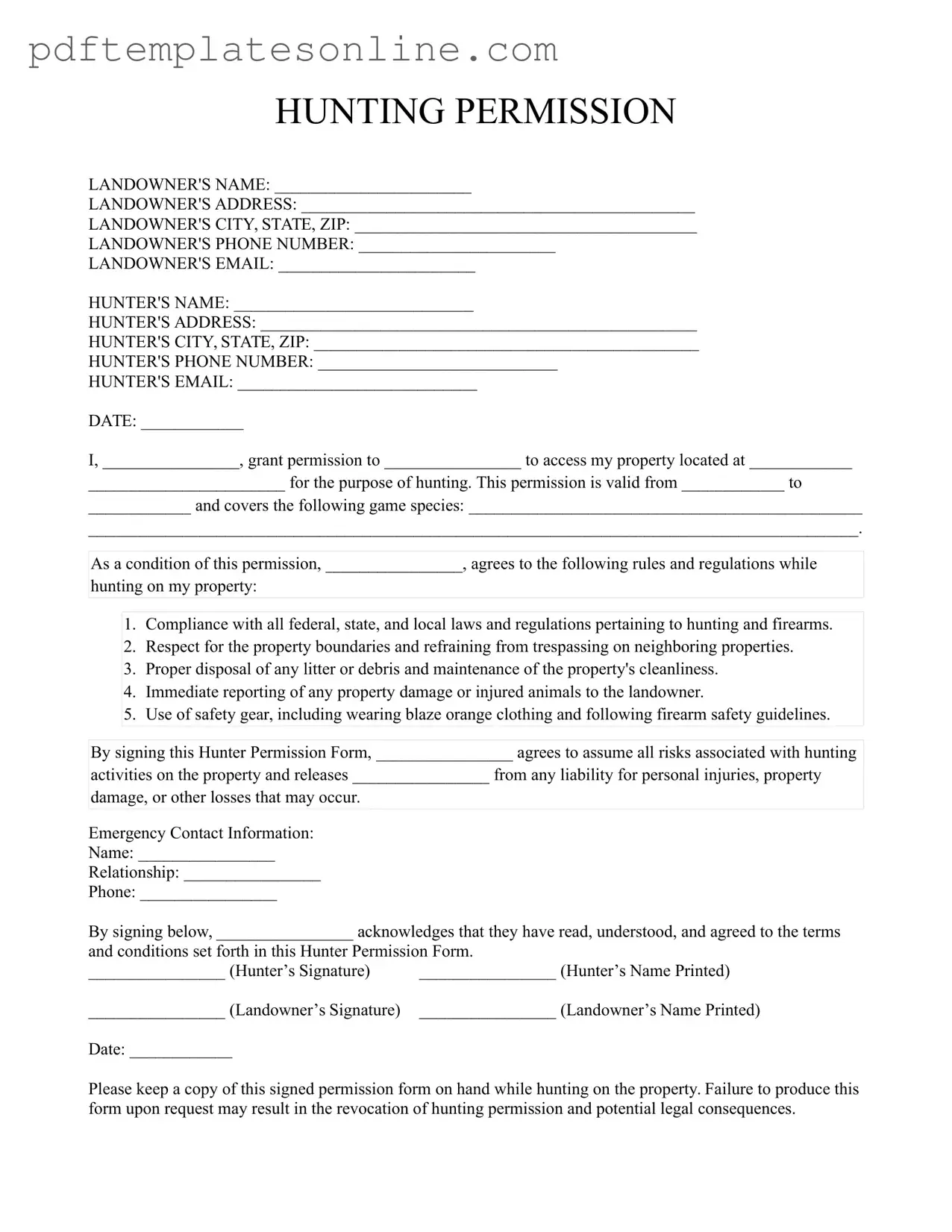Filling out the Hunter Permission form correctly is essential for both landowners and hunters. However, several common mistakes can lead to confusion or legal issues. Understanding these pitfalls can help ensure a smooth process.
One frequent error is leaving the landowner's name blank. This information is crucial as it identifies who is granting permission. Without it, the form lacks validity, and the hunter may not have clear authorization to access the property.
Another mistake involves incorrect contact information. Failing to provide accurate phone numbers or email addresses can hinder communication. If issues arise, such as property damage or safety concerns, both parties need to reach each other quickly.
People often overlook the dates of permission. Specifying the start and end dates is vital. Without these dates, the permission may be considered indefinite, which can create misunderstandings about the duration of access.
Some hunters forget to list the specific game species they are permitted to hunt. This omission can lead to legal trouble if the hunter pursues animals that were not authorized by the landowner. Clarity in this section protects both parties.
Another common oversight is not adhering to the rules and regulations outlined in the form. Hunters must agree to these conditions. If they do not acknowledge them, they may engage in activities that could result in liability issues or damage to the property.
Additionally, failing to provide emergency contact information is a mistake that can have serious consequences. In case of an accident or emergency, having a contact person is essential for ensuring swift assistance.
Some individuals neglect to obtain the necessary signatures. Both the hunter and the landowner must sign the form for it to be legally binding. Without these signatures, the permission granted may be challenged.
Lastly, people often forget to keep a copy of the signed form. This document serves as proof of permission. If a hunter cannot produce it when requested, they risk having their permission revoked and may face legal repercussions.
Avoiding these mistakes when filling out the Hunter Permission form can help ensure a safe and enjoyable hunting experience for everyone involved.
